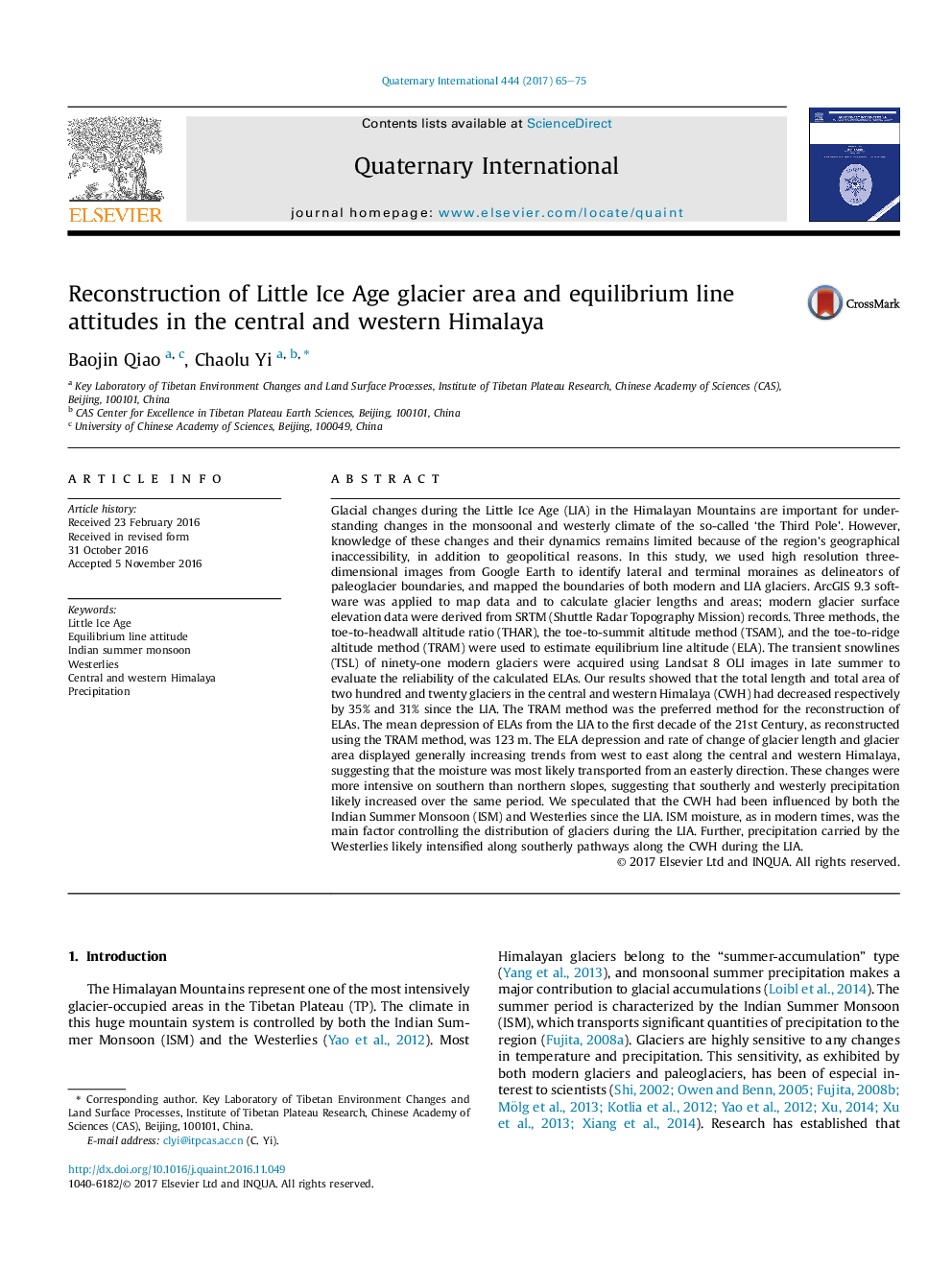| کد مقاله | کد نشریه | سال انتشار | مقاله انگلیسی | نسخه تمام متن |
|---|---|---|---|---|
| 5113386 | 1377929 | 2017 | 11 صفحه PDF | دانلود رایگان |
عنوان انگلیسی مقاله ISI
Reconstruction of Little Ice Age glacier area and equilibrium line attitudes in the central and western Himalaya
ترجمه فارسی عنوان
بازسازی عصر یخبندان کوچکی و نگرش خط تعادلی در هیمالیا مرکز و غرب
دانلود مقاله + سفارش ترجمه
دانلود مقاله ISI انگلیسی
رایگان برای ایرانیان
کلمات کلیدی
عصر یخبندان کوچک، نگرش خط تعادل، موزون تابستانی هندی، وسترلز، مرکزی و غربی هیمالیا، بارش،
موضوعات مرتبط
مهندسی و علوم پایه
علوم زمین و سیارات
زمین شناسی
چکیده انگلیسی
Glacial changes during the Little Ice Age (LIA) in the Himalayan Mountains are important for understanding changes in the monsoonal and westerly climate of the so-called 'the Third Pole'. However, knowledge of these changes and their dynamics remains limited because of the region's geographical inaccessibility, in addition to geopolitical reasons. In this study, we used high resolution three-dimensional images from Google Earth to identify lateral and terminal moraines as delineators of paleoglacier boundaries, and mapped the boundaries of both modern and LIA glaciers. ArcGIS 9.3 software was applied to map data and to calculate glacier lengths and areas; modern glacier surface elevation data were derived from SRTM (Shuttle Radar Topography Mission) records. Three methods, the toe-to-headwall altitude ratio (THAR), the toe-to-summit altitude method (TSAM), and the toe-to-ridge altitude method (TRAM) were used to estimate equilibrium line altitude (ELA). The transient snowlines (TSL) of ninety-one modern glaciers were acquired using Landsat 8 OLI images in late summer to evaluate the reliability of the calculated ELAs. Our results showed that the total length and total area of two hundred and twenty glaciers in the central and western Himalaya (CWH) had decreased respectively by 35% and 31% since the LIA. The TRAM method was the preferred method for the reconstruction of ELAs. The mean depression of ELAs from the LIA to the first decade of the 21st Century, as reconstructed using the TRAM method, was 123Â m. The ELA depression and rate of change of glacier length and glacier area displayed generally increasing trends from west to east along the central and western Himalaya, suggesting that the moisture was most likely transported from an easterly direction. These changes were more intensive on southern than northern slopes, suggesting that southerly and westerly precipitation likely increased over the same period. We speculated that the CWH had been influenced by both the Indian Summer Monsoon (ISM) and Westerlies since the LIA. ISM moisture, as in modern times, was the main factor controlling the distribution of glaciers during the LIA. Further, precipitation carried by the Westerlies likely intensified along southerly pathways along the CWH during the LIA.
ناشر
Database: Elsevier - ScienceDirect (ساینس دایرکت)
Journal: Quaternary International - Volume 444, Part A, 15 July 2017, Pages 65-75
Journal: Quaternary International - Volume 444, Part A, 15 July 2017, Pages 65-75
نویسندگان
Baojin Qiao, Chaolu Yi,
